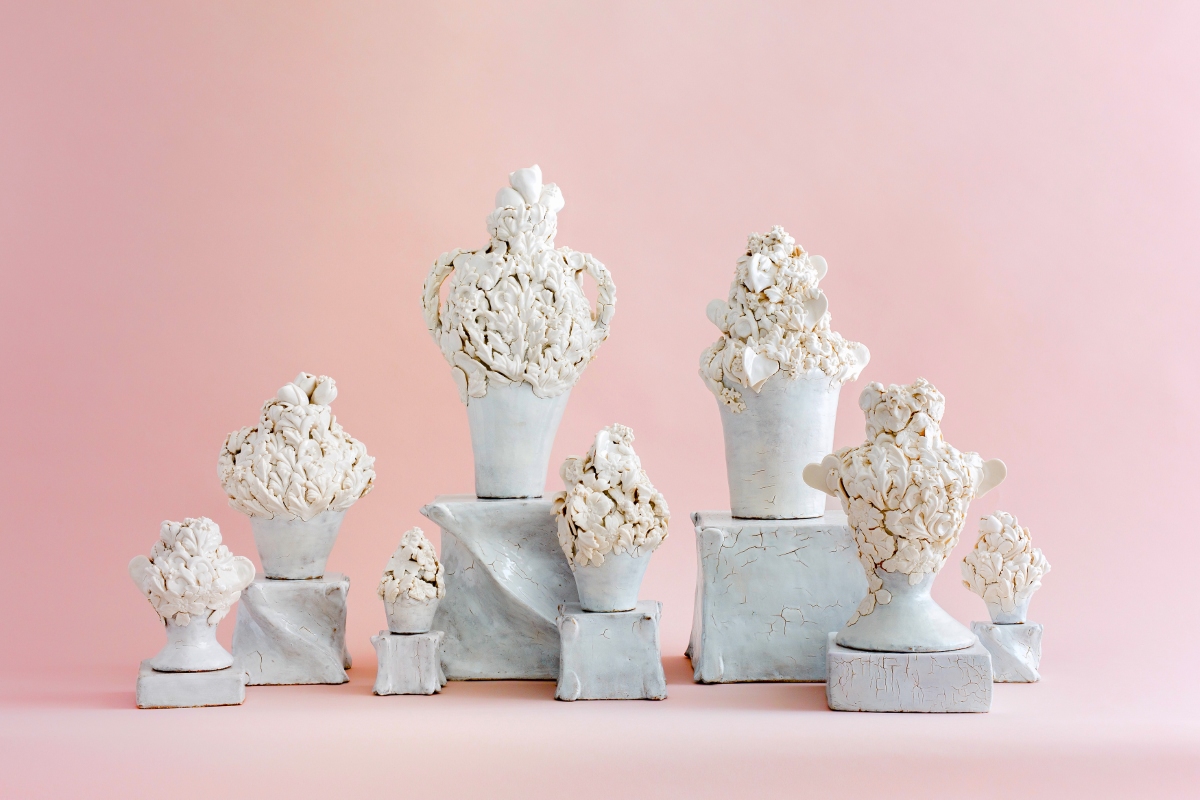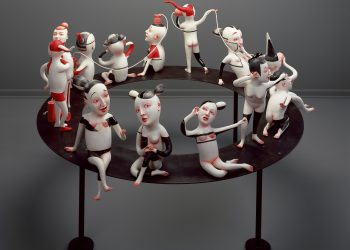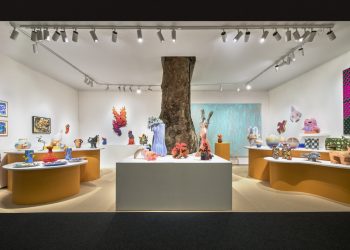Hannah Walters is a ceramic artist based in Cardiff and was a 2019/20 recipient of the Fireworks Studios residency. Time spent working in her family’s antique centre has heavily inspired her work. It developed a real interest in objects and how they were made. She creates a mix of sculptural and functional items, often blurring the line between.
Her work mostly comprises of an unusual mix of crank clay and porcelain. This begins the discussions of value and conflict in her work. She aims to make contemporary antiques, objects tied to both the past and present. Her piece, Fragmented Urn, was commissioned by National Trust property, Newton House in 2021 and Vase with Flowers can be found in the Aberystwyth Ceramics Collection and Archive. Her ceramic sculptures have been shown across the UK, including at ‘Artefact’ at the Chelsea design centre, ‘Tanio//Ignite’ with Aberystwyth Art Centre and, ‘Collect 22’ at Somerset House in London.
Her work has been shown in art magazines and journals such as Ceramic Monthly USA, Emerging Potters and Studio Potter. She has also worked on projects with a number of organisations, this includes the Eden project and National Trust property, Trelissick Gardens. One notable project was ‘the Shiro project’, with the organisation ‘Global Gardens’ and funded by Grow Wild (an educational outreach from Kew Gardens). It was aimed at celebrating native fungi with the local community through contemporary ceramic and writing workshops.
Visit Hannah Walters’ website and Instagram page.
Featured work
Selected works, 2021

The years I have spent working in an antiques centre has nurtured a true appreciation of objects, in particular with Delftware, Nant Garw porcelain and early Meissen. They evidence the West’s obsession with porcelain, the power of social status symbols, yet their value and desirability rises and falls according to interior trends.
My ceramic work is an amalgamation of this ornate antique aesthetic with a contemporary understanding of imagery. This can result in work such as a traditional vase, based on the forms of delicate Nant Garw porcelain, being built up with a crude array of stars and hearts.
If we view the traditional motifs of Delftware, Nant Garw and Meissen as containing a cultural vocabulary, one that was often appropriated as fashion, it is interesting to consider what their contemporary equivalent might be. The use of kitsch pop-symbols has become a language shared worldwide thanks to emojis. Combining these with such traditional forms creates a satirical fusion, questioning the vases elite status and reminding us of their original social history as objects of desire.













